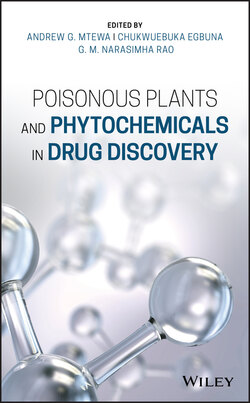Читать книгу Poisonous Plants and Phytochemicals in Drug Discovery - Группа авторов - Страница 43
2.3 Currently Available Classification Tools
ОглавлениеApart from some textbooks [14, 15], there is also software available to researchers to help them to make collections and classifications of phytotoxins that are uploaded in their respective libraries. These include the Aggregate Computational Toxicology Online Resource database [16], which is managed by the US Environmental Protection Agency; the Clinical Toxicology (CliniTox) database [17, 18]; the Toxic Plants–PhytoToxins (TPPT) database [19]; the SuperToxic database [20]; the compendium of the European Food Safety Authority [21]; the Super Natural II database [22]; and KNApSAcK‐3D [23–25]. Despite the existence of these databases, there are still gaps in systematically clustering phytotoxins because of the limitations of the tools. For example, the ACToR database fails to link toxins and toxin metabolites to some of their effects on, for example, environmental management [16] and the CliniTox database falls short in providing details of chemical characterization [19].
The TPPT database has made efforts to be better than most; however, it is primarily focused on European plant phytotoxins, in particular Swiss plants, apart from a few of the most commonly known toxins from elsewhere. The justification for this is that Swiss vegetation is a good representation of central Europe, with several altitude zones, giving it the advantage of having a wide range of plant species [26]. This being the case, there remains a need for a more improved version of a tool or a non‐computer‐based standard that can incorporate regional databases and standards into one that can give a wider picture in one resource. The databases that are available can be useful in modeling a standard that can be used in the classification of phytotoxins. In this way, phytotoxins can be optimized using the databases and/or the standards developed thereof to suit the needs of researchers, government agencies, and industries.
